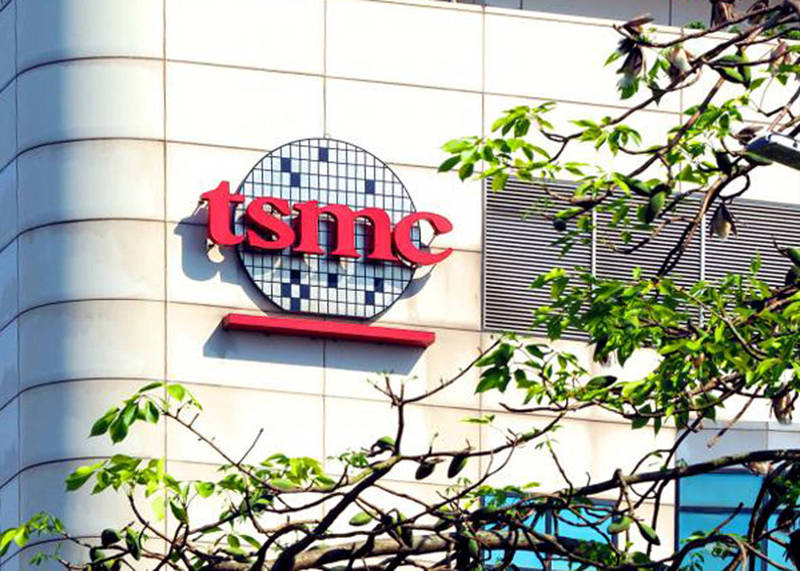《TAIPEI TIMES》 TSMC developing 2nm tech at new R&D center

The logo of Taiwan Semiconductor Manufacturing Corp (TSMC) is pictured in Hsinchu on May 15. Photo: David Chang, EPA-EFE
By Lisa Wang / Staff reporter
Taiwan Semiconductor Manufacturing Co (TSMC, 台積電) yesterday said it is to open a new cutting-edge research-and-development (R&D) center in Hsinchu next year to develop 2-nanometer (nm) technology to secure its technology leadership.
The world’s biggest contract chipmaker said it is also seeking to acquire land adjacent to the new R&D center to build a production fab for 2-nanometer chips.
This is the first time that TSMC has disclosed details about its plans to move into 2-nanometer technology.
The company has invested heavily in R&D and advanced capacity, offering 7-nanometer chips in 2018 and 5-nanometer chips this year, with plans to commence volume production of 3-nanometer chips in the second half of 2022, to maintain its edge over competitors such as Samsung Electronics Co.
The 2-nanometer chips are one generation more advanced than 3-nanometer ones.
The new R&D center, dubbed TSMC’s “Bell Lab,” is to house 8,000 scientists and engineers to develop next-generation chip technologies, TSMC senior vice president Kevin Zhang (張曉強) yesterday told an online technology symposium.
It is to be composed of two R&D sections — R1 and R2 — and one office building, the company said.
R1 is under construction and is to become operational next year, Zhang said.
It will serve as the base for TSMC to explore 2-nanometer technology and future generation technologies, TSMC senior vice president Y.P. Chin (秦永沛) said.
TSMC has spent more than US$10 billion a year on expanding advanced technology capacity over the past few years to meet customers’ demand, Chin said.
The investment allowed TSMC to increase its advanced technology capacity at a compound annual growth rate of 28 percent from 2016 to this year, he said.
To cope with robust demand, the chipmaker has continued to expand its 7-nanometer technology capacity, which is expected to be 3.5 times bigger than when it introduced the technology in 2018, Chin said.
The 5-nanometer technology capacity is forecast to grow 1.8 times in 2022, compared with this year’s capacity, he added.
To date, TSMC has shipped more than 1 billion 7-nanometer chips, the company said.
“If you have a 5G phone, most likely the phone is powered by TSMC’s 7-nanometer chips,” Zhang said.
As semiconductor technology is evolving rapidly and becoming increasingly complex, TSMC has been boosting R&D spending to ensure it is able to offer the most advanced technologies to its clients now and for the years to come, Zhang said.
The chipmaker spent US$2.96 billion on R&D last year, up 3.86 percent from 2018, Chang’s presentation showed.
Its R&D headcount also rose to 5,901 last year from 5,609 in 2018, it showed.
Tainan is a major manufacturing hub for the company’s advanced technologies.
新聞來源:TAIPEI TIMES














